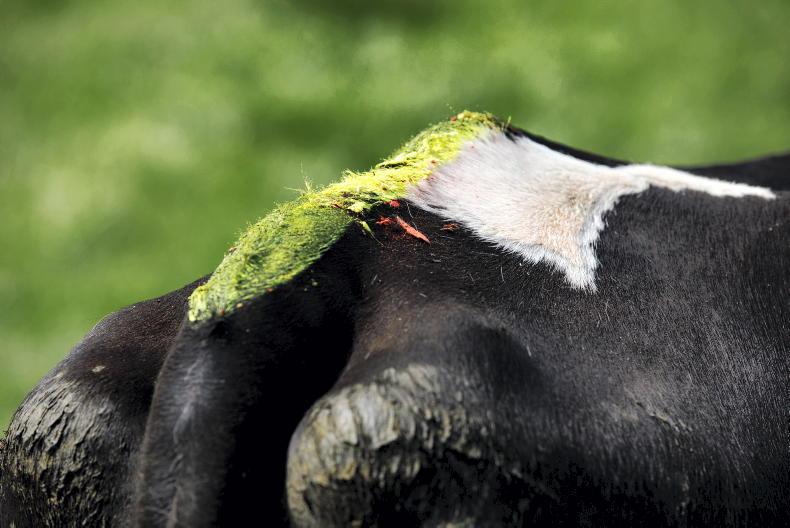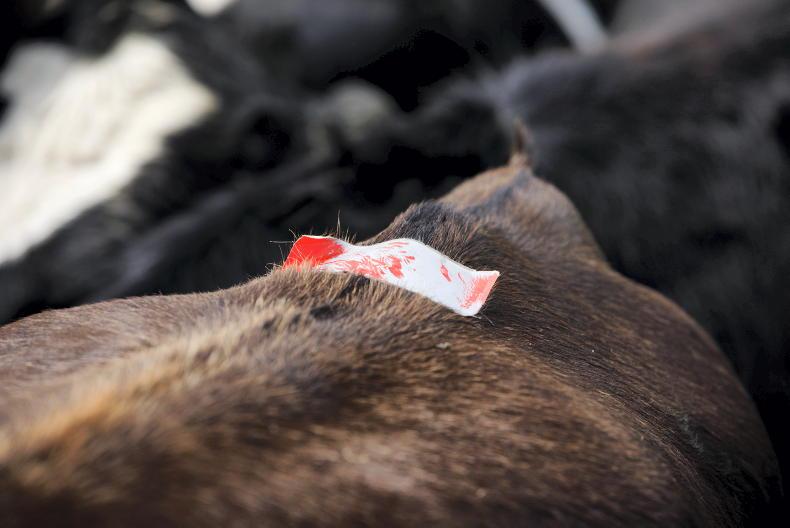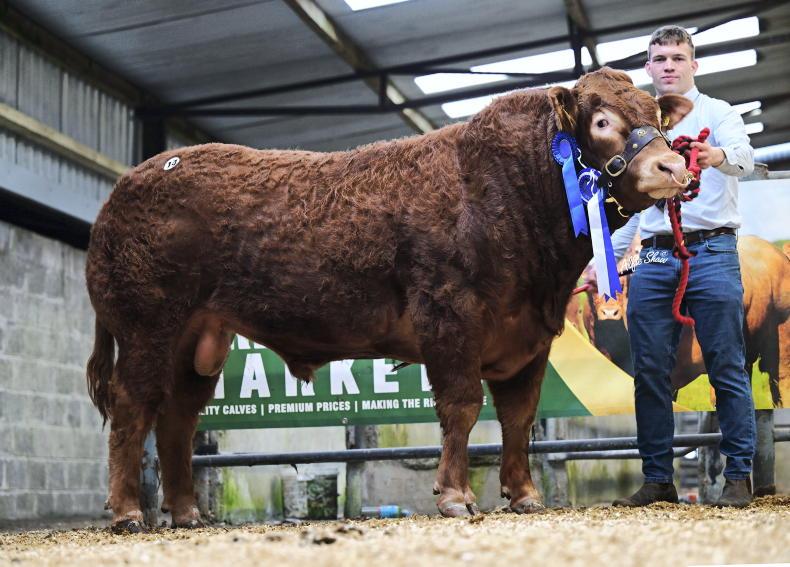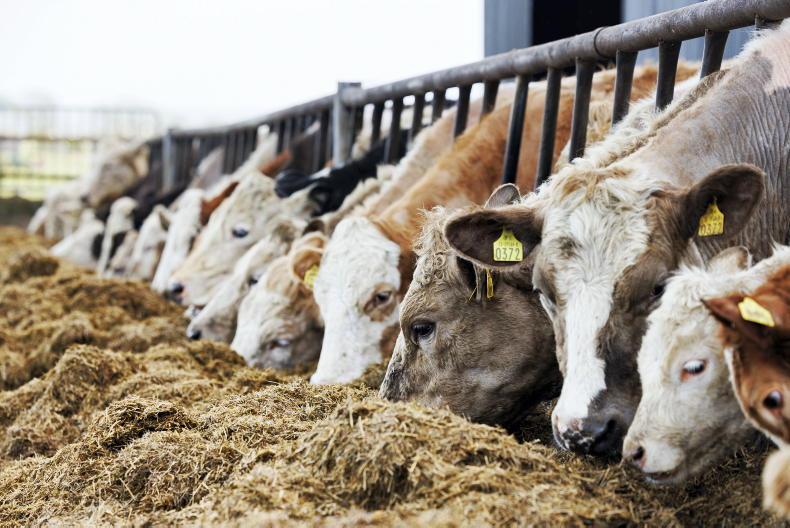The importance of good submission rates and good conception rates in a block-calving system cannot be over-estimated.
A high six-week in-calf rate and a subsequent high six-week calving rate have a huge bearing on profit.
Genetics for fertility is one thing, but there are also other factors that farmers need to keep in mind for success. The following are some of the key points;
Limit use of unproven bulls
Very young genomic bulls, commonly known as Gene Ireland bulls or G1 bulls, have no field fertility data.
This means that while they may pass all quality control checks and tests in a lab, in some situations they just don’t get cows in-calf – for biological reasons.
In 2020, the widely used AI bull Cloongibney Canning was a huge disappointment in that he broadly failed to get the cows he was mated with pregnant.
In times past, young test bulls were used sparingly across a herd, if indeed they were used at all.
With the onset of genomics and the fact that the youngest bulls have the highest EBIs – farmers are using more of these young bulls and that’s a risk from the point of view of getting high conception rates.
Farmers need to limit the number of these young bulls being used
For one thing, they are still very immature at the time their semen is collected, often just 12 or 13 months old.
AI companies have moved to withdraw any warranties from semen sales, so in the event that these, or indeed any other AI bulls are duds then the farmer has no comeback.
Farmers need to limit the number of these young bulls being used. Some AI companies are restricting sales to 15 per person, but in smaller herds this may be too many.
With a number of weeks to go before the start of the main breeding season, there is still time to manipulate body condition score (BCS) in cows.
Multiple research projects have emphasised the importance of correct BCS for high conception rates.
Farmers can manipulate intake by feeding thin cows more high-quality feed
BCS, no different to fat on humans, is determined by energy intake versus energy used.
For cows, BCS is determined by the quantity and quality of feed versus how much milk the cow is producing and how much energy is taken up in maintenance.
Farmers can manipulate intake by feeding thin cows more high-quality feed, such as high-quality grass and concentrates, but if this extra energy intake is used to produce more milk, as opposed to increasing BCS, then it will be in vain.
A combination of increasing intake and reducing offtake in the form of milk production will have the greatest impact on BCS.
The cost of the lost milk will be more than made up by the fact that more cows will be retained for next season
This usually involves milking thin cows once a day for a number of weeks. It’s a very good strategy to improve BCS of these thin cows that are at risk of not going in-calf.
The cost of the lost milk will be more than made up by the fact that more cows will be retained for next season. Many farmers practice once-a-day milking on the later-calving cows to good effect.
If the cow is not presented for AI, there is no hope of her going in-calf. Every missed heat costs €150 so preventing missed heats is an important step in achieving good fertility and high profits.
More than 50% of heats last for less than eight hours.

Cows with tail paint applied for heat detection. \ Donal O'Leary
This means that you need to be observing cows at least three times a day to spot cows in heat, presuming some sort of heat detection aids are used.
The two milkings are one observation time, so a third observation is required and the best time for this is late evening.
Heat detection aids are a must. Traditional methods such as tail paint or scratch cards are tried and trusted and very effective.

Heifers with scratch cards applied for heat detection. \ Donal O'Leary
The trick is to apply them correctly and manage them appropriately. They are a guide to identifying cows that are in heat.
If the paint isn’t applied correctly: a 2in by 9in strip from the tail head back, then identifying the cow in heat will be trickier.
Automated heat detection aids
Over recent years, there has been a massive push in selling automated heat detection aids.
These devices use modern technology to identify cows that are in heat.
There are multiple different types of products and brands on the market but they are generally quite expensive with limited battery lifespans with a maximum warranty of only five years for most collar-type heat detection aids.
There is no doubt that they are a very labour-saving tool
Prices vary depending on the product and most companies charge so much for the device per cow and so much for the base station, or computer programme that puts all the data together.
Some devices work with automatic drafting gates whereby the cows in heat will be automatically drafted out each day for AI.
There is no doubt that they are a very labour-saving tool but they come at a much higher price compared to traditional heat detection aids with no evidence that they are any better.
However, I think the fact that they free up skilled labour for other tasks, monitor health as well as fertility and allow for more use of AI and better timing of AI, particularly for sexed semen, means we can expect to see more of these on Irish farms.
A Teagasc study conducted in 2013 on 44 grass-based dairy farms found that a grass-only diet would have been deficient in iodine on 50% of the farms.
For other minerals, a grass-only diet would have provided on average 90% of the phosphorus requirements (range 45% to 130%), 80% of the copper requirements (range 30% to 125%), 65% of the zinc requirements (range 30% to 77%) and 30% of selenium requirements (range 3% to 108%) of lactating dairy cows.
Taking blood samples from a section of the herd will tell the mineral status of the feed the cows have been fed
The conclusion from the experiment was that grazed grass alone is insufficient to meet the mineral requirements of cows and some level of supplementation is necessary.
Doing a mineral analysis on a grass sample from a full grazing rotation is the best means of determining the mineral status of the herd.
Taking blood samples from a section of the herd will tell the mineral status of the feed the cows have been fed up to now, not necessarily what the cows are eating presently.
While minerals and vitamins are present in most dairy rations, the quantity and quality of these minerals vary and are not all the same depending on the spec.
Phosphorus deficiency is becoming an increasingly important issue on many farms and no doubt it will raise its head again in a few weeks’ time.
Any sort of a mineral deficiency will not be helpful in getting cows in-calf and is something that needs to be sorted.
The importance of good submission rates and good conception rates in a block-calving system cannot be over-estimated.
A high six-week in-calf rate and a subsequent high six-week calving rate have a huge bearing on profit.
Genetics for fertility is one thing, but there are also other factors that farmers need to keep in mind for success. The following are some of the key points;
Limit use of unproven bulls
Very young genomic bulls, commonly known as Gene Ireland bulls or G1 bulls, have no field fertility data.
This means that while they may pass all quality control checks and tests in a lab, in some situations they just don’t get cows in-calf – for biological reasons.
In 2020, the widely used AI bull Cloongibney Canning was a huge disappointment in that he broadly failed to get the cows he was mated with pregnant.
In times past, young test bulls were used sparingly across a herd, if indeed they were used at all.
With the onset of genomics and the fact that the youngest bulls have the highest EBIs – farmers are using more of these young bulls and that’s a risk from the point of view of getting high conception rates.
Farmers need to limit the number of these young bulls being used
For one thing, they are still very immature at the time their semen is collected, often just 12 or 13 months old.
AI companies have moved to withdraw any warranties from semen sales, so in the event that these, or indeed any other AI bulls are duds then the farmer has no comeback.
Farmers need to limit the number of these young bulls being used. Some AI companies are restricting sales to 15 per person, but in smaller herds this may be too many.
With a number of weeks to go before the start of the main breeding season, there is still time to manipulate body condition score (BCS) in cows.
Multiple research projects have emphasised the importance of correct BCS for high conception rates.
Farmers can manipulate intake by feeding thin cows more high-quality feed
BCS, no different to fat on humans, is determined by energy intake versus energy used.
For cows, BCS is determined by the quantity and quality of feed versus how much milk the cow is producing and how much energy is taken up in maintenance.
Farmers can manipulate intake by feeding thin cows more high-quality feed, such as high-quality grass and concentrates, but if this extra energy intake is used to produce more milk, as opposed to increasing BCS, then it will be in vain.
A combination of increasing intake and reducing offtake in the form of milk production will have the greatest impact on BCS.
The cost of the lost milk will be more than made up by the fact that more cows will be retained for next season
This usually involves milking thin cows once a day for a number of weeks. It’s a very good strategy to improve BCS of these thin cows that are at risk of not going in-calf.
The cost of the lost milk will be more than made up by the fact that more cows will be retained for next season. Many farmers practice once-a-day milking on the later-calving cows to good effect.
If the cow is not presented for AI, there is no hope of her going in-calf. Every missed heat costs €150 so preventing missed heats is an important step in achieving good fertility and high profits.
More than 50% of heats last for less than eight hours.

Cows with tail paint applied for heat detection. \ Donal O'Leary
This means that you need to be observing cows at least three times a day to spot cows in heat, presuming some sort of heat detection aids are used.
The two milkings are one observation time, so a third observation is required and the best time for this is late evening.
Heat detection aids are a must. Traditional methods such as tail paint or scratch cards are tried and trusted and very effective.

Heifers with scratch cards applied for heat detection. \ Donal O'Leary
The trick is to apply them correctly and manage them appropriately. They are a guide to identifying cows that are in heat.
If the paint isn’t applied correctly: a 2in by 9in strip from the tail head back, then identifying the cow in heat will be trickier.
Automated heat detection aids
Over recent years, there has been a massive push in selling automated heat detection aids.
These devices use modern technology to identify cows that are in heat.
There are multiple different types of products and brands on the market but they are generally quite expensive with limited battery lifespans with a maximum warranty of only five years for most collar-type heat detection aids.
There is no doubt that they are a very labour-saving tool
Prices vary depending on the product and most companies charge so much for the device per cow and so much for the base station, or computer programme that puts all the data together.
Some devices work with automatic drafting gates whereby the cows in heat will be automatically drafted out each day for AI.
There is no doubt that they are a very labour-saving tool but they come at a much higher price compared to traditional heat detection aids with no evidence that they are any better.
However, I think the fact that they free up skilled labour for other tasks, monitor health as well as fertility and allow for more use of AI and better timing of AI, particularly for sexed semen, means we can expect to see more of these on Irish farms.
A Teagasc study conducted in 2013 on 44 grass-based dairy farms found that a grass-only diet would have been deficient in iodine on 50% of the farms.
For other minerals, a grass-only diet would have provided on average 90% of the phosphorus requirements (range 45% to 130%), 80% of the copper requirements (range 30% to 125%), 65% of the zinc requirements (range 30% to 77%) and 30% of selenium requirements (range 3% to 108%) of lactating dairy cows.
Taking blood samples from a section of the herd will tell the mineral status of the feed the cows have been fed
The conclusion from the experiment was that grazed grass alone is insufficient to meet the mineral requirements of cows and some level of supplementation is necessary.
Doing a mineral analysis on a grass sample from a full grazing rotation is the best means of determining the mineral status of the herd.
Taking blood samples from a section of the herd will tell the mineral status of the feed the cows have been fed up to now, not necessarily what the cows are eating presently.
While minerals and vitamins are present in most dairy rations, the quantity and quality of these minerals vary and are not all the same depending on the spec.
Phosphorus deficiency is becoming an increasingly important issue on many farms and no doubt it will raise its head again in a few weeks’ time.
Any sort of a mineral deficiency will not be helpful in getting cows in-calf and is something that needs to be sorted.











SHARING OPTIONS